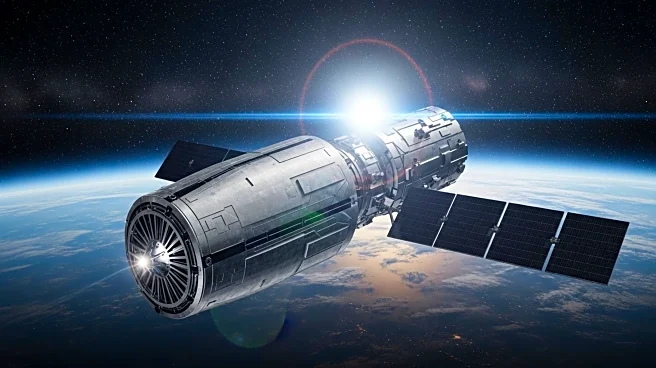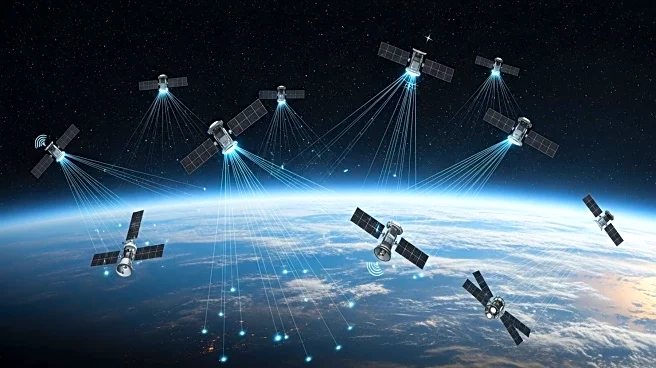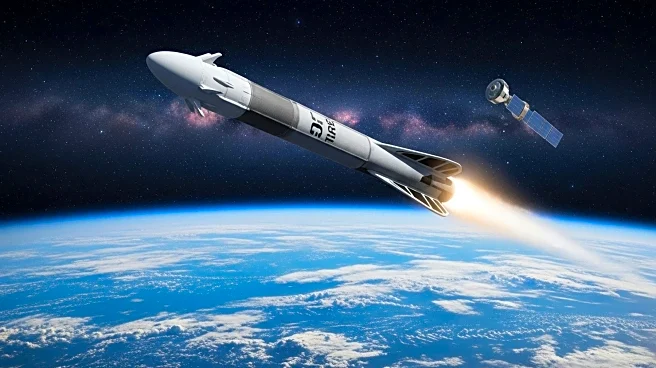What's Happening?
AST SpaceMobile's stock experienced a significant surge, rising approximately 16% on both October 1 and October 2, 2025, closing at around $66.16. This increase in stock value was driven by the announcement of the completion of the BlueBird-6 satellite, which is set to be launched by the end of the year. The company plans to have between 45 to 60 satellites in orbit by 2026. AST SpaceMobile has partnered with over 50 global carriers, including AT&T, Verizon, and Vodafone, to provide cell service from space. The company has also secured a partnership with Bell Canada to launch satellite-to-cell service in 2026.
Why It's Important?
The developments at AST SpaceMobile are significant as they represent a major step forward in satellite communications, particularly in the 'direct-to-cell' market. This technology could potentially revolutionize how mobile services are delivered, especially in remote areas where traditional cell towers are not feasible. The partnerships with major carriers like AT&T and Verizon highlight the industry's interest in this technology. However, the company faces competition from established players like SpaceX's Starlink and Amazon's Kuiper, which are also developing satellite-based communication networks.
What's Next?
AST SpaceMobile plans to continue its satellite launches, with BlueBird-6 set to launch by the end of 2025 and BlueBird-7 following shortly after. The company aims to have a total of 45 to 60 satellites in orbit by 2026. Analysts have mixed views on the company's future, with some expressing optimism about its potential to capture a significant market share, while others remain cautious due to the competitive landscape and the company's current financial position.
Beyond the Headlines
The success of AST SpaceMobile's satellite program could have broader implications for global connectivity, particularly in underserved regions. The ability to provide direct-to-cell service from space could bridge the digital divide, offering internet access to remote and rural areas. However, the company must navigate regulatory challenges and secure additional funding to sustain its ambitious satellite deployment plans.










